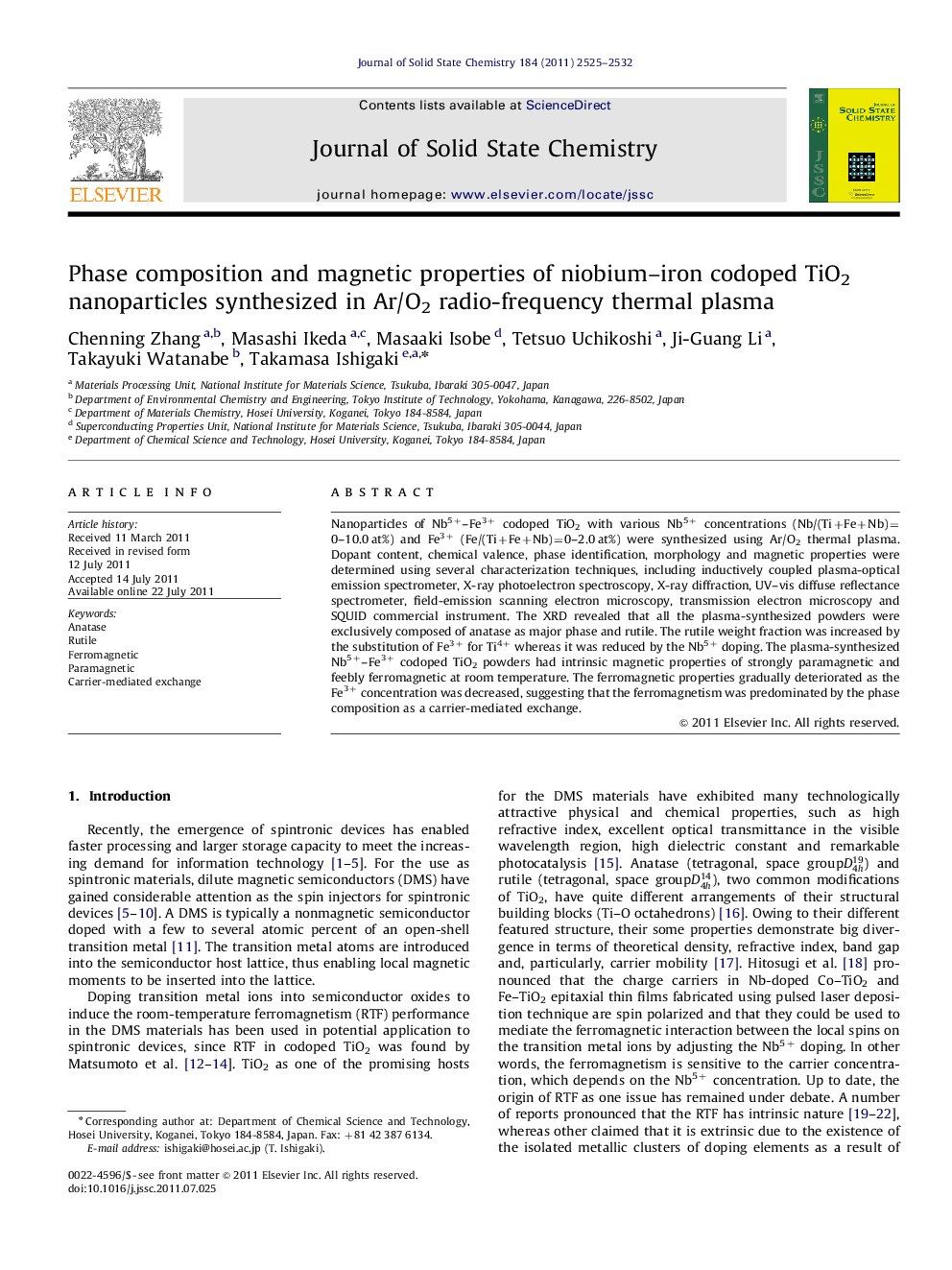| Article ID | Journal | Published Year | Pages | File Type |
|---|---|---|---|---|
| 1329090 | Journal of Solid State Chemistry | 2011 | 8 Pages |
Nanoparticles of Nb5+–Fe3+ codoped TiO2 with various Nb5+ concentrations (Nb/(Ti+Fe+Nb)=0–10.0 at%) and Fe3+ (Fe/(Ti+Fe+Nb)=0–2.0 at%) were synthesized using Ar/O2 thermal plasma. Dopant content, chemical valence, phase identification, morphology and magnetic properties were determined using several characterization techniques, including inductively coupled plasma-optical emission spectrometer, X-ray photoelectron spectroscopy, X-ray diffraction, UV–vis diffuse reflectance spectrometer, field-emission scanning electron microscopy, transmission electron microscopy and SQUID commercial instrument. The XRD revealed that all the plasma-synthesized powders were exclusively composed of anatase as major phase and rutile. The rutile weight fraction was increased by the substitution of Fe3+ for Ti4+ whereas it was reduced by the Nb5+ doping. The plasma-synthesized Nb5+–Fe3+ codoped TiO2 powders had intrinsic magnetic properties of strongly paramagnetic and feebly ferromagnetic at room temperature. The ferromagnetic properties gradually deteriorated as the Fe3+ concentration was decreased, suggesting that the ferromagnetism was predominated by the phase composition as a carrier-mediated exchange.
Graphical AbstractSpherical nanoparticles of Nb5+–Fe3+ codoped TiO2 were synthesized using Ar/O2 thermal plasma. The plasma-synthesized powders were composed of anatase as major phase and rutile. Rutile weight fraction was increased by Fe3+ addition but was reduced by Nb5+ doping. Strongly paramagnetic and feebly ferromagnetic properties are of intrinsic nature. Ferromagnetic properties gradually deteriorated as Fe3+ concentration was increased.Figure optionsDownload full-size imageDownload as PowerPoint slideHighlights► Nanoparticles of Nb5+–Fe3+ codoped TiO2 were synthesized using Ar/O2 thermal plasma. ► The plasma-synthesized powders were composed of anatase as major phase and rutile. ► Rutile weight fraction was increased by Fe3+ addition but was reduced by Nb5+ doping. ► Strongly paramagnetic and feebly ferromagnetic properties are of intrinsic nature. ► Ferromagnetic properties gradually deteriorated as Fe3+ concentration was increased.
